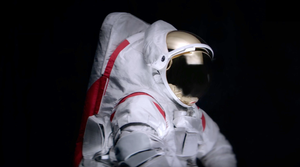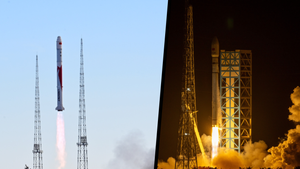
Sep 28, 2024
China unveils lunar spacesuit!
Sixteen years and one day after taikonauts Zhai Zhigang (翟志刚) and Liu Boming (刘伯明) performed China’s first spacewalk, the China Manned Space Agency unveiled the spacesuit that will be used by taikonauts on the lunar surface later this decade!
The currently unnamed spacesuit was unveiled to the public at the third Spacesuit Technology Forum, which was hosted by the China Astronaut Research and Training Center in Chongqing (重庆).

China Manned Space Agency is hosting a competition to name the spacesuit. Requirements for the name are: a Chinese name of no more than four characters, indicating a connection with the Feitian spacesuits, and highlighting intelligent manufacturing in China.

A video was released by China Manned Space Agency shortly after the suit was revealed showcasing a wide range of movement. In the suit taikonauts Wang Yaping (王亚平) and Zhai Zhigang (翟志刚) demonstrated the ability to walk, crouch, kneel, and climb a ladder.
Military Affairs Time (新闻频道军情时间到) also shared a video from the forum in Chongqing where the suit was brought on stage to showcase movement. Said video had someone wearing the spacesuit on stage, demonstrating the wide range of arm movement, ability to lean far forward, another crouch, and ease of walking.

Development of the spacesuit is reported to have begun in 2020 with a series of technological breakthroughs since. According to Li Meng, of the China Astronaut Research and Training Center, the goal of development was to produce lightweight, compact, highly reliable, and safe lunar suits.
The new suits feature more flexible gloves, a panoramic glare-proof helmet visor, and joints designed for low gravity. These improvements will greatly help activities on the lunar surface, such as surface sample retrieval and experiment deployment. Two cameras are also present on the helmet with a short and long focal length, to enable mission controllers back on Earth to assist taikonauts on the surface.
Materials used on the suit will shield the wearer from the Moon’s thermal environment and dust. The control panel on the suit’s front is reportedly easy to operate for controlling suit systems.
Previous spacesuits developed by China for crewed missions were designed for use outside of the Shenzhou spacecraft and Tiangong Space Station. As such the legs had limited mobility and were fairly rigid. The second-generation suit is primarily for performing maintenance outside of the space station.

People’s Daily shared an infographic about the lunar space suit going over the design of the suit. The suit's shape is inspired by traditional armor in order to appear resolute; the red bands on the arm are designed to resemble the elegant and flowing "flying apsaras" of Dunhuang art; the red bands along the legs are intended to enhance a visual sense of strength; and the lower leg decoration is designed to resemble a rocket taking off.
The first mission to use the new spacesuits are planned to occur before 2030, a more specific date is expected to be revealed in the coming years. Taikonauts are already believed to be training with these suits in a simulated lunar environment.
Article republished from China Space Updates with permission.



